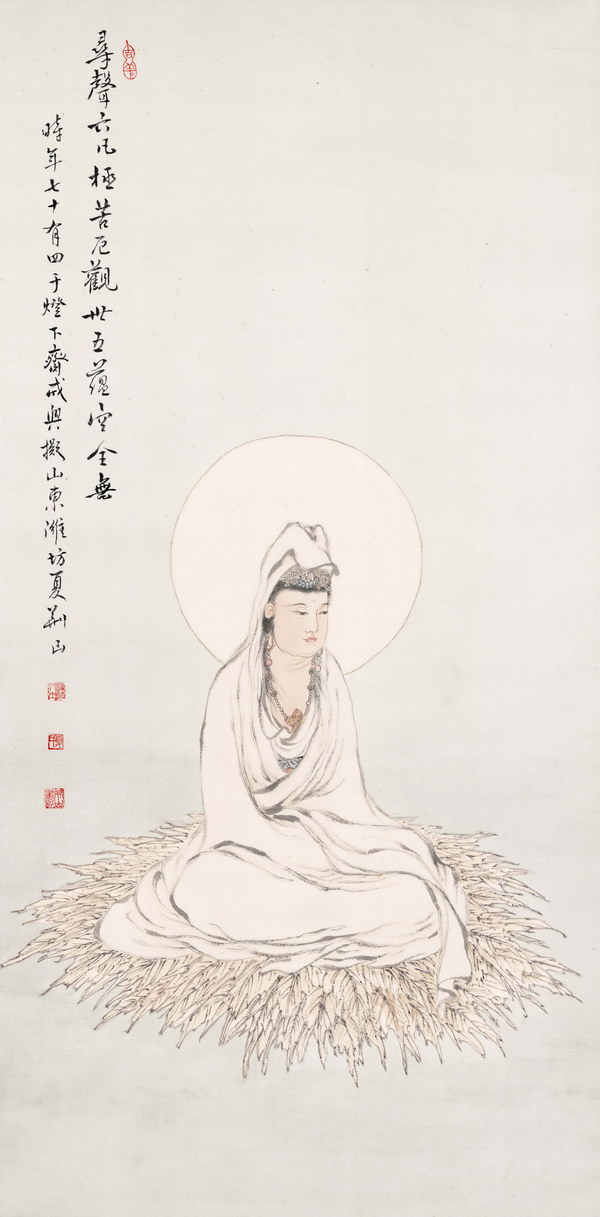
Xia Jing Shan became a Buddhist lay disciple under Dharma Master Nanting in 1950 and vowed to dedicate his body and mind to Buddhism by devoting to Buddhist teachings and following the Bodhisattva way of life. Buddhist portraits take up a big part of Xia Jing Shan’s painting oeuvre. He came to the realization in 1988 of the subtleties and the refinements in Buddhist portraits, and resolved to dedicate the remainder of his life to painting Buddhist portraits. Portraits of Guan Yin (Avalokiteśvara) take up the largest portion of Xia’s oeuvre of Buddhist portraits, consisting of over 30 pieces spanning across different genres including gongbi (a realist fine-brush technique in Chinese painting), ink wash painting, and line drawing. Guan Yin is also depicted in many different ways in Xia’s paintings, including Guan Yin on one leaf, water-moon Guan Yin, red bamboo Guan Yin, white-robed Guan Yin, meditating Guan Yin, and boy worshipping Guan Yin, etc. He created several paintings based on the theme White-robed Guan Yin or the white-robed Guan Yin combined with other auspicious images. Moreover, Xia’s White-robed Guan Yin shares many similarities with Muqi’s White-Robed Guan Yin painted in the Southern Song dynasty. The white-robed Guan Yin is an important portrait in Zen Buddhist paintings, and is often created using Chinese ink painting techniques. There have been many white-robed Guan Yin portraits painted throughout history, and Muqi of Southern Song dynasty’s rendition marked the beginning of innovative, unique approach to the subject matter. “It is simple in meaning and without superfluous embellishment,” commented Yuan dynasty artist Wu Dasu on the painting. If the aesthetic expressed in Muqi’s White-robed Guan Yin is one that is earnest, simple yet bold, natural, tranquil, and unbounded, Xia’s portrayal, although follows the style of Muqi’s rendition, shows more of Guan Yin’s compassionate and wise qualities, with an aesthetic that is refined and concentrated.
Based on the three aspects of tracing and imitating, skeletal patterning using brush, and realistic and freehand brushwork, this essay explores how Xia’s White-robed Guan Yin inherited and expanded from Muqi’s rendition, further examining how through his painting of the Avalokiteśvara in the white robe Xia demonstrates the Bodhisattva way of life: “Buddha Dharma exists for the world, apart from this world, there is no enlightenment.”
